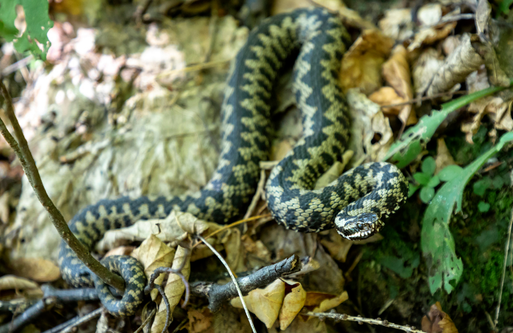|
5/24/2021 0 Comments Dogs & Snakes (UK)Adders are the only poisonous snake in the UK. They are approximately 65cm long and have a distinctive zig-zag pattern down their bodies and a V shape on their heads. They are a protected species. They are found on heathland, or the edge of woodland and are often bathing in sunshine. Adders can swim and may be found on river banks, in rivers or ponds. Adders can be found in gardens, although this is uncommon. Statistics show that bites seldom happen in gardens. Adders hibernate between October and March, although as the climate warms there have been reports on activity throughout the year. Adders will always try to move away from you and your dog if they can. They will bite if they feel threatened. The adder bite is poisonous to humans and our dogs. Bites tend to occur in April – July and usually in the afternoons when adders are more active. Whilst bites do happen they are rare. Most people visiting the countryside never see an adder as they are secretive creatures who avoid us when possible. Dogs tend to get bitten on front legs or muzzles. Young dogs are more likely to get bitten. Perhaps as a result of trying to play with an adder. It can be distressing for our dog to get bitten by an adder and they need immediate veterinary attention. With prompt treatment it is rarely fatal. Smaller dogs are more at risk than larger dogs due to toxicity. Steps to Take If Your Dog is Bitten
Prevention is always a better strategy. Not all UK snakes are poisonous but it is better to avoid all.
Be vigilant. Watch where you and your dog are stepping. Try to stay on paths. There are often signposts indicating that an area is a designated reptile area.
0 Comments
Leave a Reply. |
Search by typing & pressing enter

